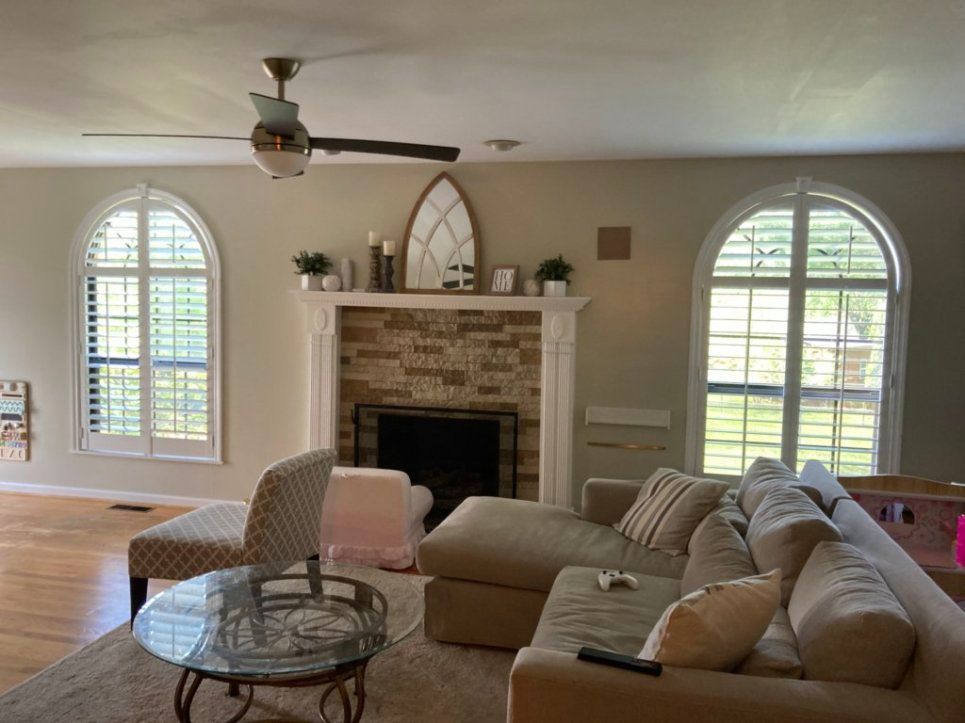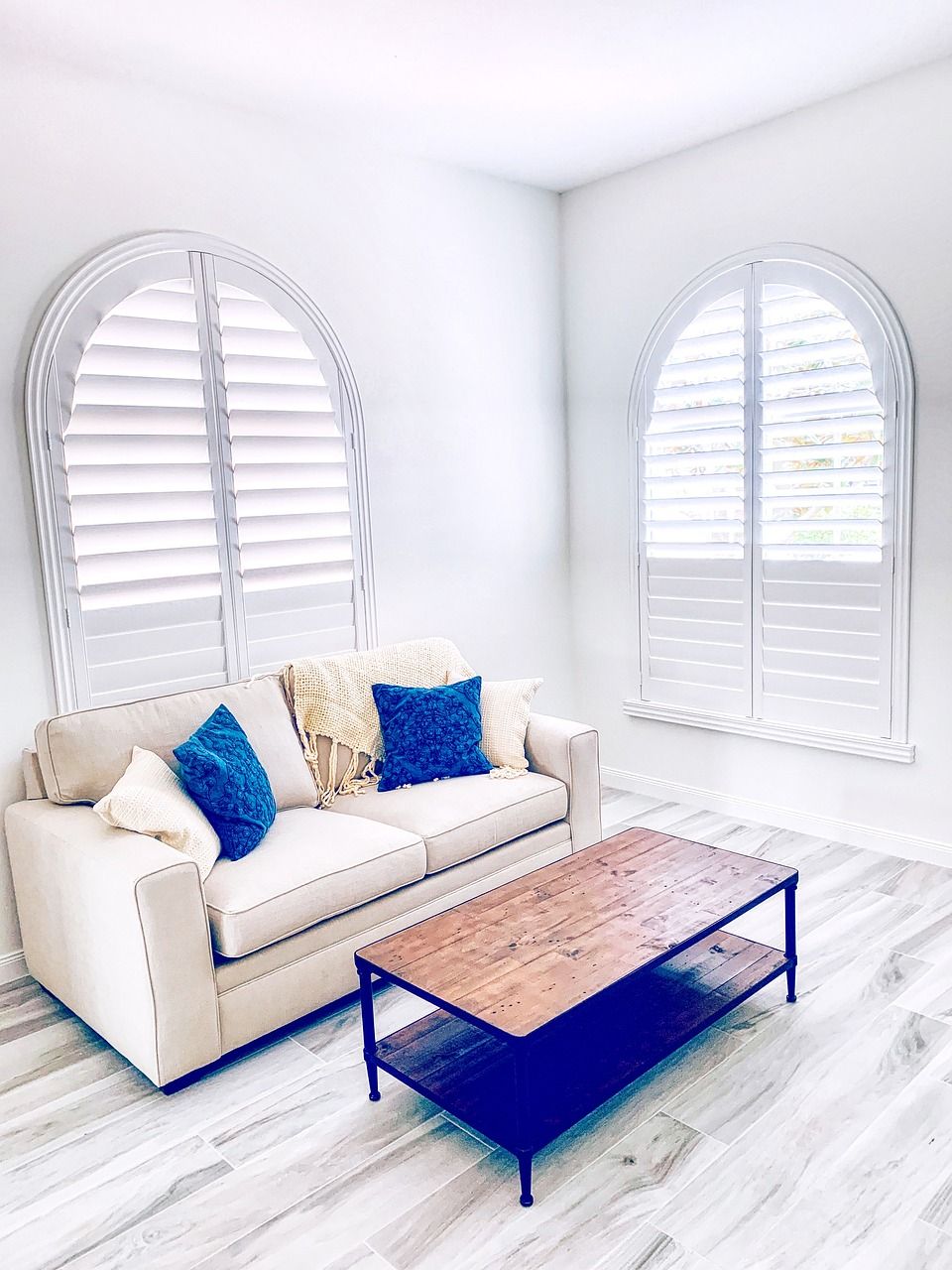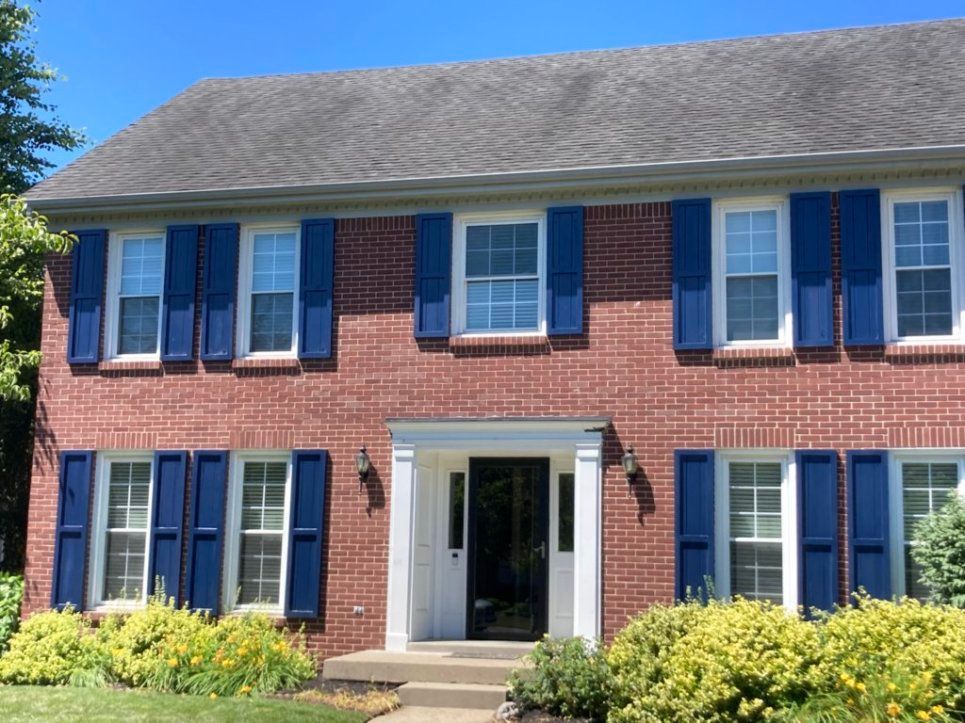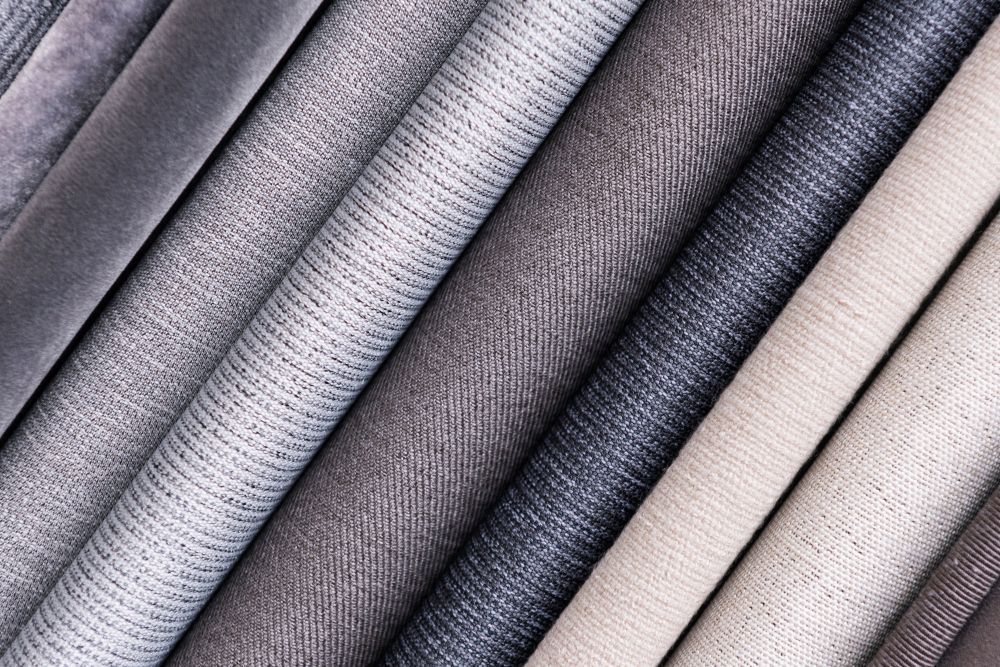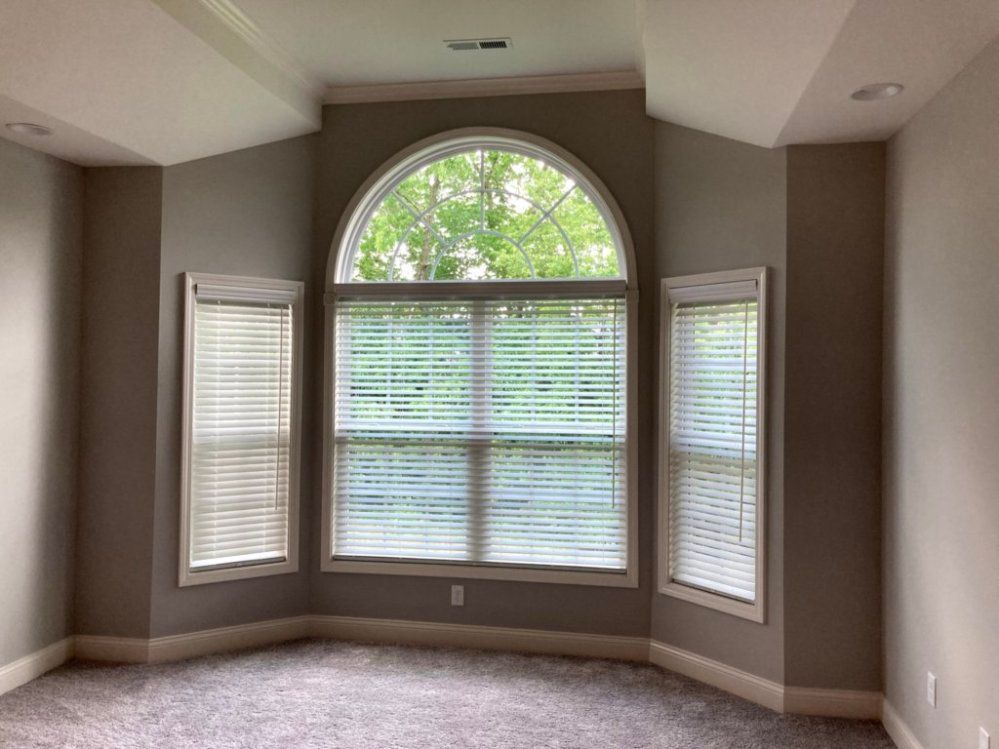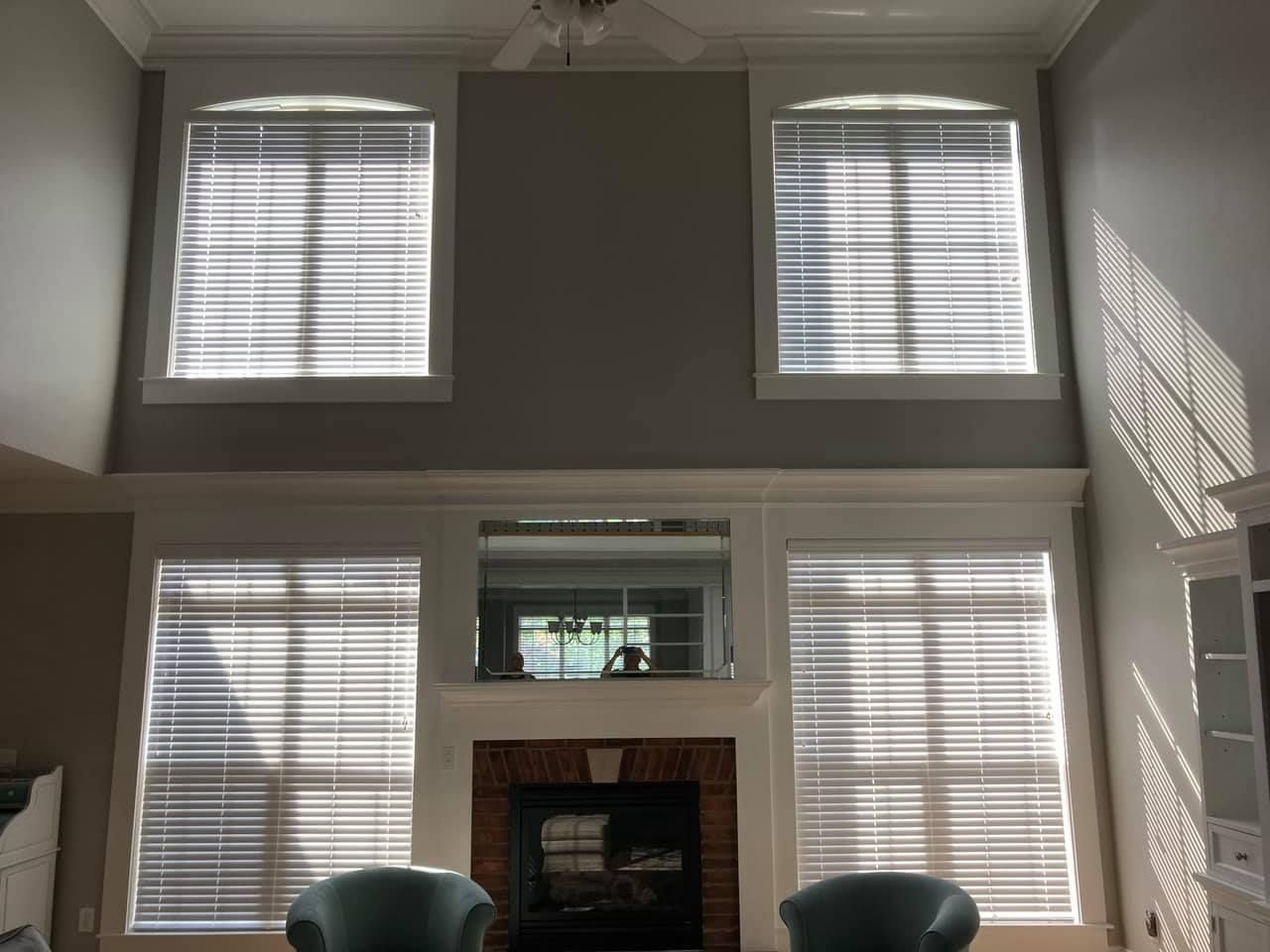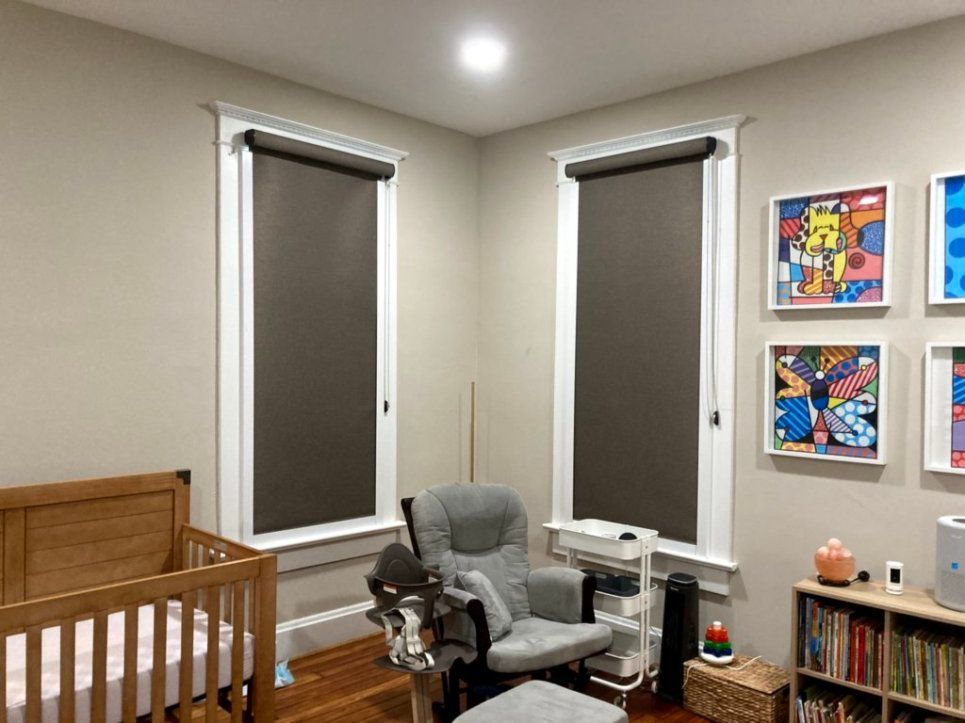Choosing Between Faux-Wood and Real Wood Blinds: What Kentucky Homeowners Should Know
September 17, 2025
When it comes to window treatments, blinds remain one of the most popular choices for Kentucky homeowners. They’re versatile, stylish, and functional. But when deciding between faux-wood and real wood blinds, many people find themselves torn. Real wood offers timeless beauty, while faux-wood provides durability and affordability. Which is right for your home?
This guide will break down the differences, advantages, and key considerations of both options so you can make a confident decision tailored to your needs.

The Differences Between Faux-Wood and Real Wood Blinds
Both faux-wood and real wood blinds are designed to deliver privacy, light control, and a polished look, but they differ significantly in materials and performance.
- Real Wood Blinds
Made from authentic hardwood such as basswood or oak. - Known for their warm, natural finish and lightweight construction.
Can be custom-stained or painted to match your interiors. - Faux-Wood Blinds
Crafted from PVC, vinyl, or a wood composite.
Designed to mimic the look of real wood at a lower price point.
More resistant to moisture and humidity, making them ideal for kitchens and bathrooms.
Understanding these core differences is the first step in choosing which option best fits your lifestyle and home design.
How to Decide: Key Considerations for Kentucky Homeowners
Making the right choice depends on your priorities, home environment, and budget. Here are the main factors to weigh:
- Aesthetic Appeal
Real wood blinds offer unmatched natural beauty and elegance.
Faux-wood blinds replicate the look but may not achieve the same depth of texture. - Durability and Moisture Resistance
Faux-wood blinds are ideal in humid environments or near sinks and showers.
Real wood blinds can warp in high humidity, so they’re better suited for dry rooms like bedrooms or living rooms. - Weight and Installation
Real wood blinds are lighter, making them easier to lift and operate.
Faux-wood blinds can be heavier, especially in large windows. - Cost Considerations
Faux-wood blinds are generally more affordable.
Real wood blinds require a higher upfront investment but can add more value to the home. - Maintenance
Both are easy to clean with dusting or a damp cloth.
Real wood blinds may require more delicate care to preserve their finish. - Environmental Impact
Real wood blinds are made from natural, renewable materials.
Faux-wood blinds may last longer in high-traffic areas, reducing replacements over time.
FAQs
- Are faux-wood blinds as durable as real wood?
Yes, especially in humid conditions. Faux-wood blinds resist warping and cracking, making them highly durable for kitchens and bathrooms. - Which option looks better in high-end homes?
Real wood blinds are often preferred for luxury spaces due to their rich, natural grain and timeless appeal. - Do faux-wood blinds fade over time?
Quality faux-wood blinds are UV-resistant, but lower-end models may fade with long-term sun exposure. - Are real wood blinds eco-friendly?
Yes, especially when sourced from sustainable forests. They are a renewable, biodegradable material. - Can both be customized?
Absolutely. Both faux-wood and real wood blinds can be tailored in size, finish, and slat width to fit your windows and style preferences.
Conclusion
Both faux-wood and real wood blinds have their place in Kentucky homes. If you’re looking for affordability, moisture resistance, and durability, faux-wood blinds are an excellent choice. If your priority is elegance, natural beauty, and a timeless finish, real wood blinds may be the better investment.
No matter which you choose, working with a local Lexington provider ensures expert measurements, high-quality materials, and professional installation for long-lasting results.
Schedule a free in-home consultation today to see samples and discover the perfect blinds for your home.
